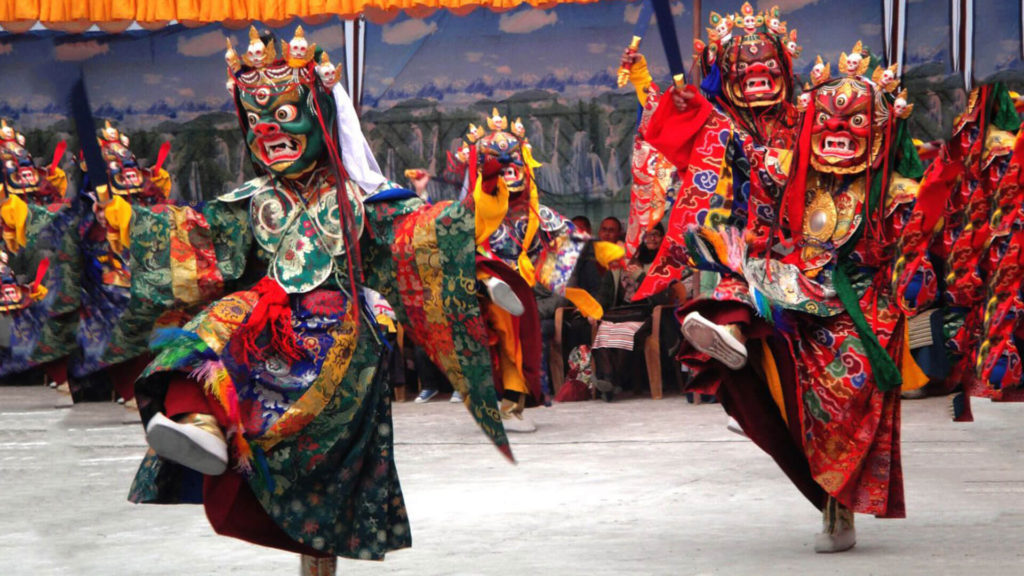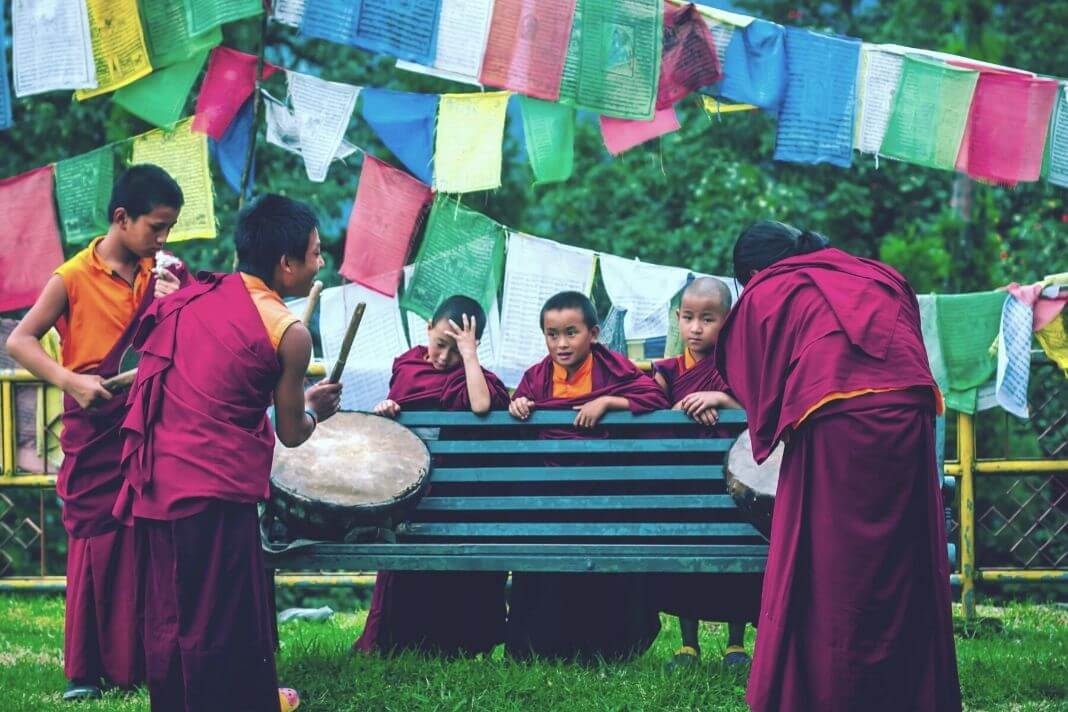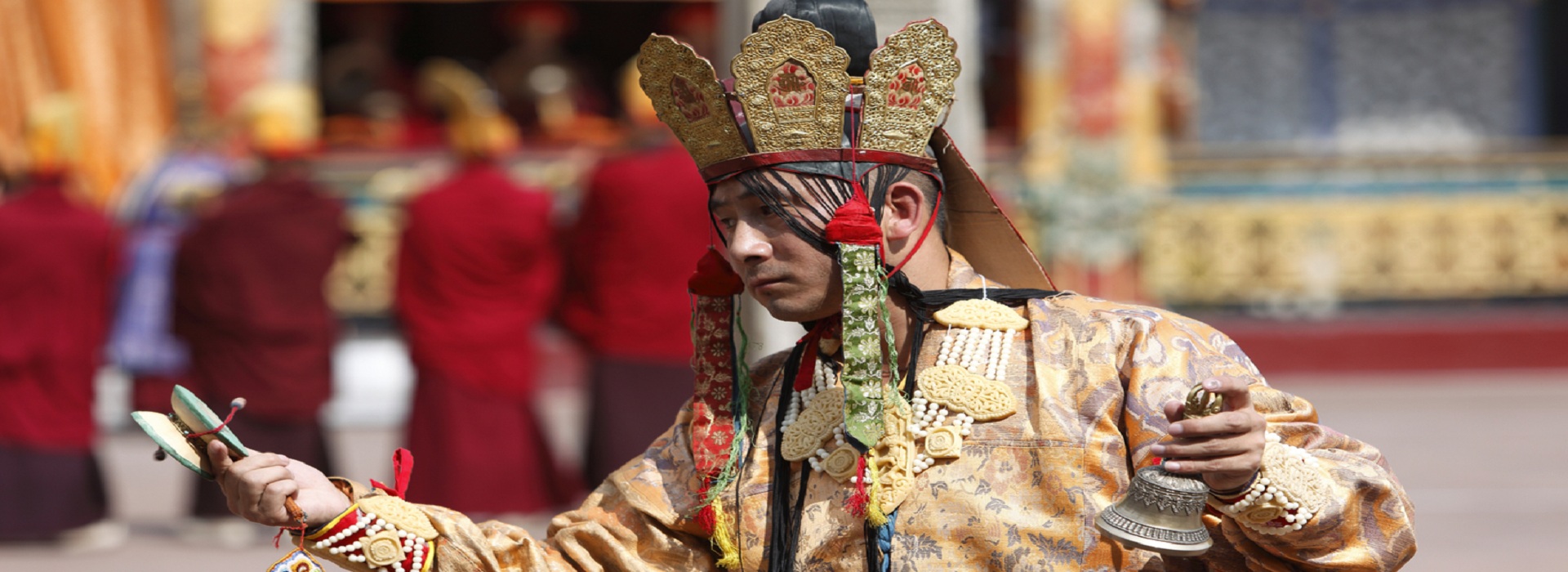The traditional dances and music of Sikkim are a fascinating part of the local culture. The locals have a unique style of dancing, which is represented by the renowned mask dance. Dancers wear colorful masks and hats decorated with swords and adorn their bodies during this dance. The movement of these dancers is extremely beautiful, as well as the music they use. This is the best way to get a true glimpse into Sikkimese tradition and culture.
The people of Sikkim are very traditional and have their own way of making useful objects. Some of the most popular handicraft items are the choksee table, woolen carpet, canvas wall hanging, and thankas delineating paintings on different aspects of the state. Handloom products made of bamboo and cane are also popular in Sikkim. The local women are incredibly talented weavers and craftspeople. The craftwork is a popular tourist attraction.

There are several traditions and languages associated with Sikkim. The majority of the people live under the Hindu religion. Buddhists are also prevalent in the state. The language spoken by the locals is called Khas, and is similar to Hindi. The costumes worn by both men and women are bright and colorful, and accompanied by music played on traditional instruments. Lu Khangthamo is a popular dance. While the male attire consists of a long, double breasted tunic, women wear a long trouser or sarong, and wrap themselves in a shawl.
Among the many ethnic groups of Sikkim are the Lepchas, Buddhists, and Hindus. Sikkim has the highest proportion of Christians in the country, representing 10% of the population. Jain and Muslim communities make up about one percent of the population. For more information about the culture and tradition of Sikkim, please visit our website. We hope you enjoy the culture and tradition of Sikkim.
Sikkim has a unique blend of modernity and tradition. In the capital, Gangtok, red robed lamas share tables with stylish young people. While the Lepchas congregate at monasteries and temples during festivals, the Nepales migrated in large numbers and soon became the dominant group. Nowadays, more than 80 percent of the population are Nepales. And, in addition to these diverse ethnic groups, there are a number of different religious celebrations.

If you’re looking for a getaway from the hustle and bustle of city life, you’ve come to the right place. The small state of Sikkim is a cosmopolitan hub for travelers. Its capital, Gangtok, is located in the heart of the state. The state is home to some of the world’s highest mountains, including Kanchanjunga, which is the third highest in the world and the largest in India. Kanchanjunga National Park encircles 30 percent of Sikkim.
Women’s clothing varies from tribe to tribe. While Lepcha men wear a white pajama known as Thokro-Dum, Bhutia women wear a multi-coloured woolen cloth known as Pangden. Bhutia men wear a waistcoat instead. And, there’s no mistaking Nepalese influence. The ethnic group makes up the majority of the population in Sikkim.
Sikkim has five distinct seasons. Winters in the south are subtropical, while summers are relatively warm. However, the region’s climate is not warm enough to throw away your warm clothes and sweaters. It’s advisable to check the weather forecast about a fortnight before your trip to Sikkim. This will help you determine what clothing to pack. There are a number of ways to travel around the state without sacrificing your culture.

During the 17th century, the Namgyal dynasty founded the state on the Silk Road. The Chogyal was in power until 1890. The British captured the state in 1890 and added it to independent India in 1947. The Sikkim state is considered to have the highest per capita income and literacy rate in the Himalayas. In 1975, the Indian Army put an end to the monarchy and made Sikkim the 22nd state of India.
If you’re planning a visit to Sikkim, you’ll need to consider the different modes of transport to reach the state. By bus, you can travel to NJP in less than a day, but by plane, you’ll need a minimum of 6-8 hours to reach the state capital. You can also opt for helicopter transportation. The Sikkim Helicopter Service operates daily flights between Gangtok and Bagdogra. The flight takes 30 minutes and can hold up to four passengers.

